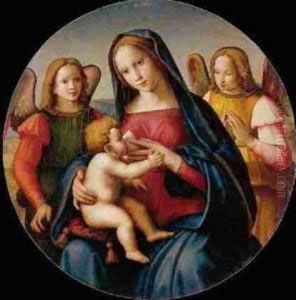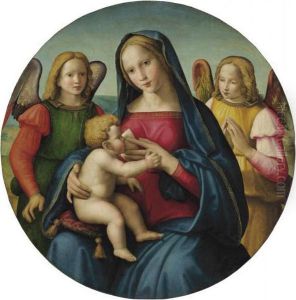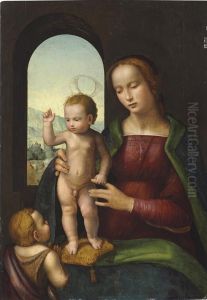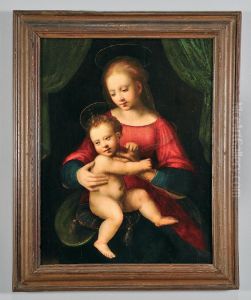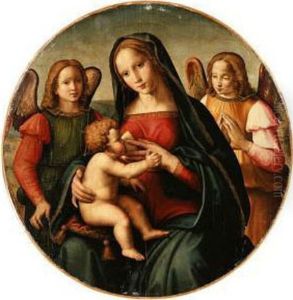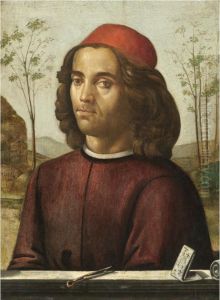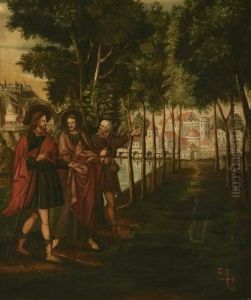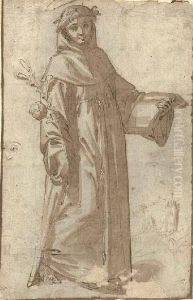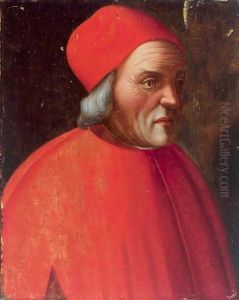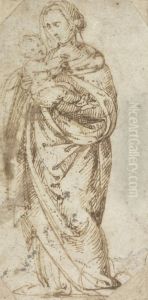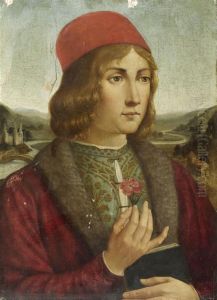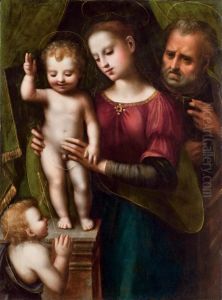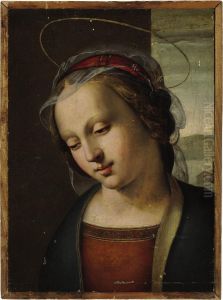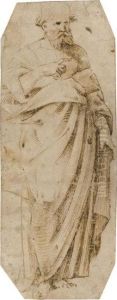Ridolfi Domenico Di Ghirlandaio Paintings
Domenico Ghirlandaio, born Domenico di Tommaso Curradi di Doffo Bigordi in 1448, was one of the most prominent and influential Renaissance painters in Florence. His nickname, 'Ghirlandaio', originated from his father's profession as a garland maker (a 'ghirlandaio' in Italian), which subtly predicated the decorative nature of Domenico's artistry. Ghirlandaio's work is celebrated for its detailed portrayal of contemporary life and its use in depicting traditional religious scenes, making him a pivotal figure in the transition to the High Renaissance.
Educated in the arts from a young age, Ghirlandaio apprenticed under Alesso Baldovinetti and later worked closely with Andrea del Verrocchio, alongside contemporaries such as Leonardo da Vinci. This environment nurtured his mastery over fresco and panel painting, with a notable emphasis on linear perspective and human emotion, which became hallmarks of his style. His adeptness at integrating complex narratives with the day-to-day activities of Florence's populace, rendered with meticulous attention to detail and vibrant color, positioned him as a sought-after artist among the city's elite families and religious institutions.
Ghirlandaio's most renowned works include a series of frescoes in the Sassetti Chapel of the Santa Trinita church and his contributions to the Tornabuoni Chapel in the Santa Maria Novella, where his artistry in fresco painting reached its zenith. These works are lauded for their vivid storytelling and the incorporation of contemporary Florentine society into the scenes, bridging the realms of the sacred and the profane. His portrayal of the Last Supper in the convent of San Marco is another testament to his skill in creating engaging religious narratives that are both grandiose and accessible.
Apart from his frescoes, Ghirlandaio was also a proficient portraitist, capturing the likeness and personality of his subjects with remarkable clarity and insight. His portraits of notable figures of the time contributed to the development of portrait painting as a genre in Renaissance art.
Ghirlandaio's influence extended beyond his lifetime through his workshop, which became a training ground for the next generation of Florentine artists. Most notably, Michelangelo Buonarroti was among his apprentices, and Ghirlandaio's teaching and techniques can be seen in the works of the great master. Domenico Ghirlandaio died in 1494, leaving behind a legacy that significantly shaped the course of Italian Renaissance art. His body of work continues to be admired for its beauty, technical skill, and historical importance, securing his place among the greats of the Renaissance era.
